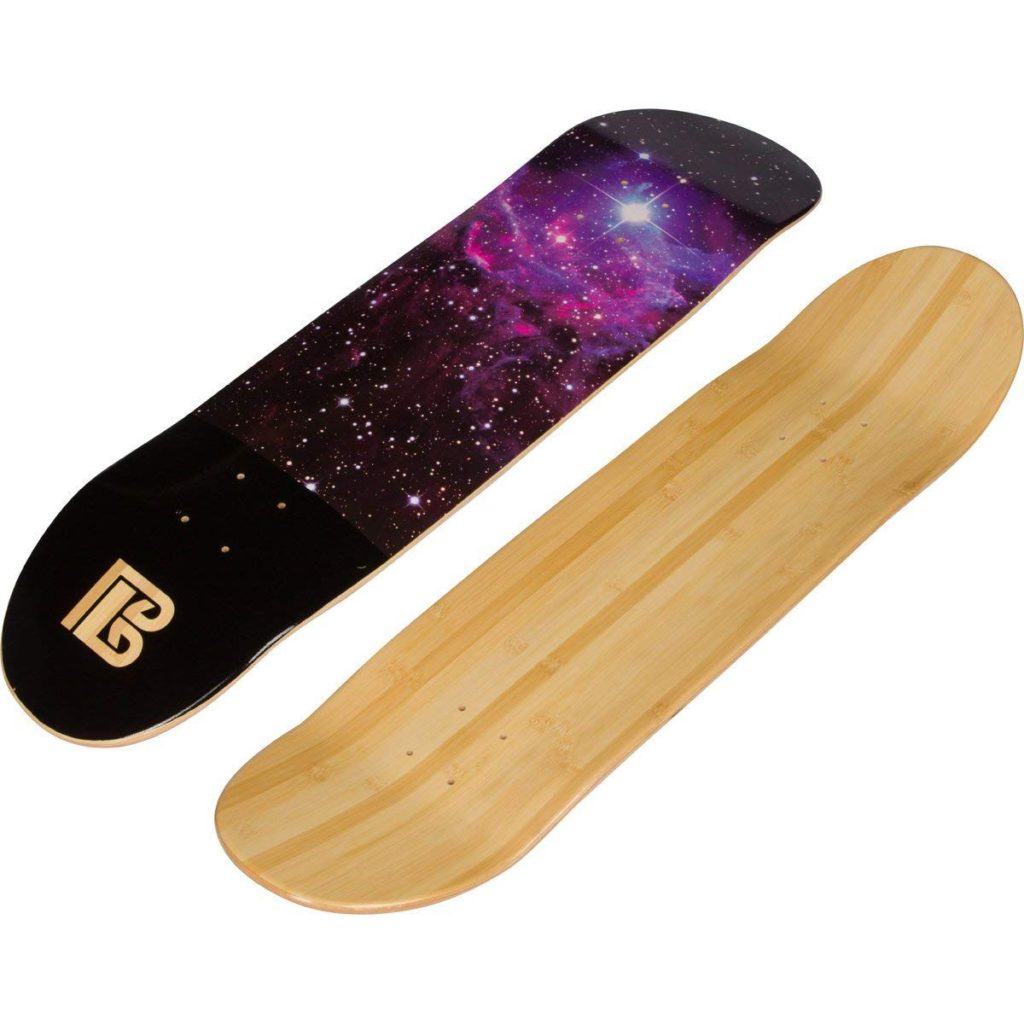Skateboard decks differ in length, but most of them are about 7″-10″ wide and are made of seven-ply wood, bamboo, resin, carbon fiber or plastic. Deciding which skateboard deck is right for you depends on what you’re going to be skating and the perfect longboard wheels for cruising on rough roads, of course, your own brand choice. Below are some things to remember when purchasing a skateboard deck.
Width
Choose your skateboard deck by width, not weight. The total width of the skateboard deck is 7.5″- 8.25″ The best distance depends on your height and type of skateboarding. If you buy a deck that’s too big for your height and shoe size, you’ll need more strength, which can make skateboarding and trick riding challenging. If you pick a board that is too narrow for your height and shoe size, you’re going to have trouble balancing and you’re not going to feel stable. Generally, teen and adult riders would like at least 7.5″ of width. Bigger skateboarders and those skating ramps and green ramps should have a broader deck, and street skaters typically prefer a narrower deck.
The length
The length of the skateboard is the distance from the tip of the nose to the tip of the tail. Shortboard length is about 28″- 32″ but only advanced skaters apply to length. Width and wheelbase should be the top factors when designing your skateboard, not the weight.
Wheelbase
The wheelbase is the distance between the inner mounting holes of your board. The width between these mounting holes defines how far apart your front and back wheels are going to be. Manufacturers decide the wheelbase from which the vehicle mounting holes on the deck are drilled.The average wheelbase is between 13″-15″ While several decks have only one set of holes, some skateboards have several truck mounting holes (or “wheelbase options”). Adjusting the wheelbase will have a dramatic effect on how the board works. Your degree of expertise will suggest the right longboard wheels for cruising on rough roads.
Nose and tail
The nose is the “front” of your skateboard, and the tail is the “back.” Which end is hard to discern, but most decks give you graphics to tell the two apart. There are a lot of skateboard decks with a bigger hop on the nose and a mellower kick on the tail.
Mount Holes
Mount holes are pre-drilled slots where skateboard trucks are mounted. Organized as different pairs of four holes; one set is above the nose, the other close to the tail.
Ply
Ply is a thin sheet of wood that is closely pressed together to create a skateboard deck. Rather than make a deck of one solid piece of wood, the majority of producers put the wood in a cross-grain pattern to create a supremely sturdy surface. The standard skateboard is seven-ply, though most boards are not nine-ply.
Concave
Concave is the curve of the wood between the nose and the tail of the deck. Concave makes for a more balanced ride and a smoother skateboard. Read our concave guide below for more information on various concave forms.
EFP
The EFP is short on the Successful Foot Platform. Unlike the wheelbase, which calculates just width, the EFP defines the area at the top of the deck where the riders stand to steer the board. The EFP shows the section of the deck between the front and rear trucks. You can think of EFP as the space of a skateboard deck that isn’t the nose or tail.

